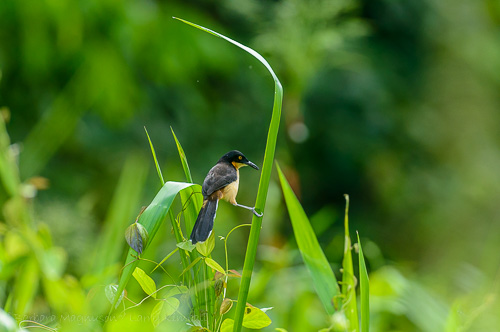
We view a spare and thinning land, spare in the sense of unmolested space, we have left precious little of the planet to live on its own terms. All of the wild places on this planet are refugia. Refuge for us from the onslaught of the modern age, refuge for the others that share our blue and green earth. In the case of Yasuni National Park, Ecuador, this refuge is not quite 4,000 square miles but is one of the most biologically diverse places on earth. Two hectares in Yasuni has at least 655 tree species, that is more than the number of native trees in the US and Canada, over 600 species of birds (North America has about 700), about 60,000 species of insects per hectare and 2 uncontacted (voluntary) indigenous tribes. It also contains about 850 million barrels of oil. And so with Ecuador now allowing oil drilling in the national park, that diversity is under assault. Illegal drilling roads have begun to snake into the park. With that, deforestation expands, illegal hunting, illegal logging and with other encroachment this brilliant beacon of life will begin to dim. It’s certainly not spare in what it embraces, life is exploding all around us, much of it unseen. Species beyond counting, uncountable colors of green that surround and engulf the visual senses to the point of a form of blindness. We are surrounded by green, a living, breathing, emerald world. The green retreats a little when the sky is reflected in water, moving or still. The sun’s light is diffuse here (the sun’s power is not), mostly a softer light struggling through the humidity, the reflected sky is not really blue. It rains a lot in the Amazon so the reflected sky is often of the clouds that bulge down, swollen with rain.

Meeting this mass of life on its own terms overwhelms and comforts at the same time. Our guides have senses that, in us, have lain dormant or are little used. Jairo, English speaker and, with his family, owner of a small eco reserve in the Tandayapa Valley and Vladimir, a Kichwa hunter turned guide, see, hear and interpret the forest for us. Sounds become parrots, a thrashing in the trees becomes a troop of monkeys, a silhouette in the canopy becomes a Wooly Monkey, bats roost under a tree branch, unseen if not for Vladimir or Jairo.



They bring the canoe quietly and slowly to the edge of the lagoon. A hiss, full of intent, issues from the lady guarding her nest. Many cubic feet of plant debris, piled just so, protects and helps to incubate her eggs, had hidden her from view. She stood up on her arguably short legs and moved forward into sight. Short legs would not be the measure that mattered here, 15 feet of Black Caiman with a mouth full of large triangular teeth and an attitude can focus your attention. Standing in the canoe to get a better angle didn’t seem like a bad idea as long as the caiman only hissed her displeasure and didn’t try to upend us. She didn’t, we remained dry, in the canoe and managed to get a few images.

There is always (or there should be) a tension between the photographer and the subject. I feel that tension at all times, the want to simply appreciate whatever was happening in front of me. Could be a hummingbird, or cloud scattered light crossing the landscape. Take the image or absorb the scene, doing both sometimes seems impossible. Many times I have savored a scene as the image and not the experience. The camera is a magnificent tool to use for sharing with people who haven’t the opportunity to see that bit of the world in front of the photographer. Shouldn’t the experience come before technology? I have no real answer. The image is the reason for the experience, so maybe I do have an answer, for me.







![Cobalt-Winged Parakeet [Brotogeris cyanoptera]](https://pronghornwildlifephotography.files.wordpress.com/2015/05/bint-2220.jpg?w=840)
These photos are absolutely stunning with informative and interesting commentary. A joy!
Thanks for the kind words Nancy.
I am thankful for all the spaces that have been set aside for nature to enable wonderful photos like you took.
Always appreciate your comments Lyle. We just have to insure that those spaces for nature aren’t degraded and continue to work for their expansion.